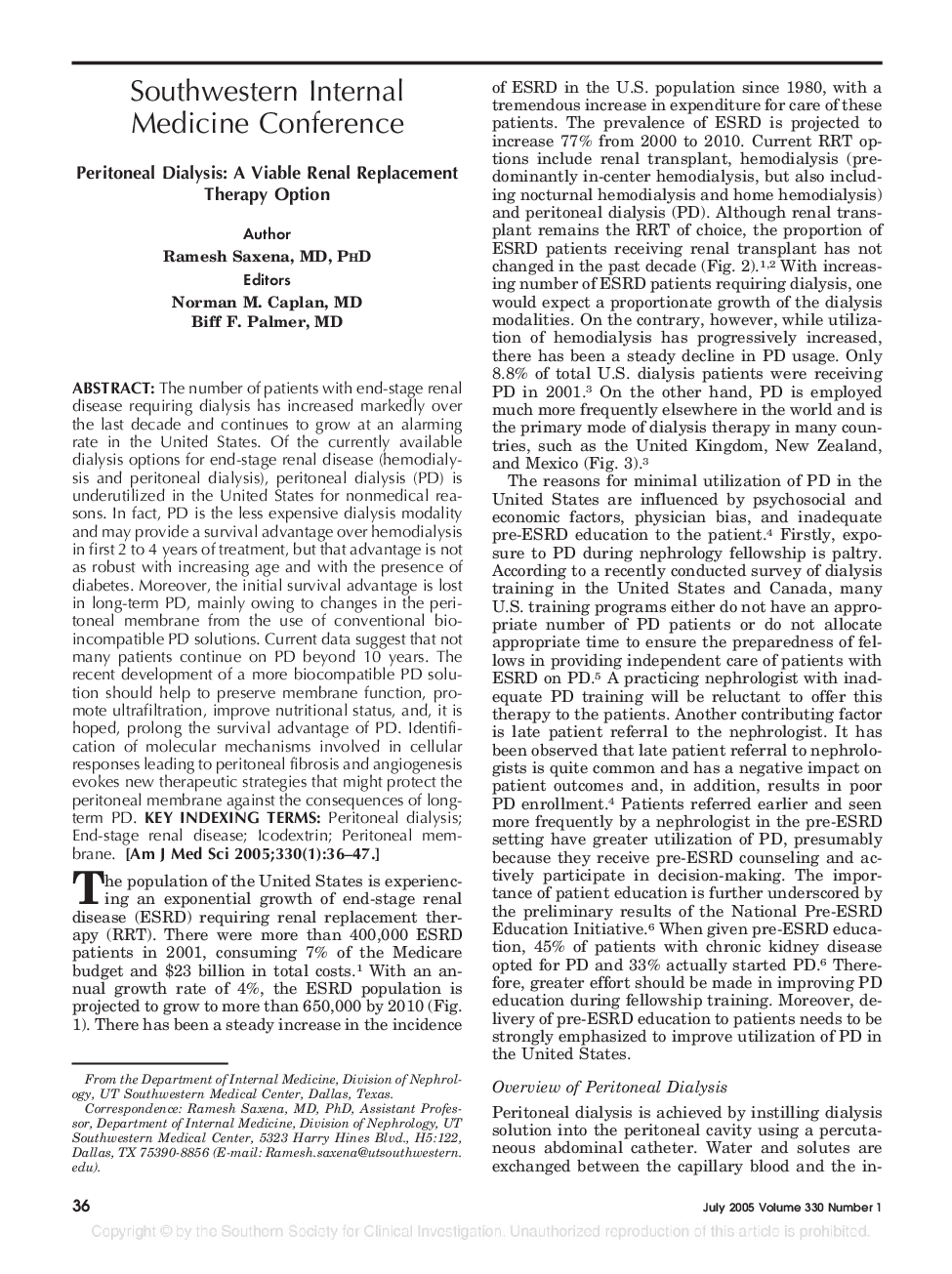| Article ID | Journal | Published Year | Pages | File Type |
|---|---|---|---|---|
| 9942481 | The American Journal of the Medical Sciences | 2005 | 12 Pages |
Abstract
The number of patients with end-stage renal disease requiring dialysis has increased markedly over the last decade and continues to grow at an alarming rate in the United States. Of the currently available dialysis options for end-stage renal disease (hemodialysis and peritoneal dialysis), peritoneal dialysis (PD) is underutilized in the United States for nonmedical reasons. In fact, PD is the less expensive dialysis modality and may provide a survival advantage over hemodialysis in first 2 to 4 years of treatment, but that advantage is not as robust with increasing age and with the presence of diabetes. Moreover, the initial survival advantage is lost in long-term PD, mainly owing to changes in the peritoneal membrane from the use of conventional bioincompatible PD solutions. Current data suggest that not many patients continue on PD beyond 10 years. The recent development of a more biocompatible PD solution should help to preserve membrane function, promote ultrafiltration, improve nutritional status, and, it is hoped, prolong the survival advantage of PD. Identification of molecular mechanisms involved in cellular responses leading to peritoneal fibrosis and angiogenesis evokes new therapeutic strategies that might protect the peritoneal membrane against the consequences of longterm PD.
Related Topics
Health Sciences
Medicine and Dentistry
Cardiology and Cardiovascular Medicine
Authors
Ramesh MD, PhD, Norman M. (Editors), Biff F. MD,
